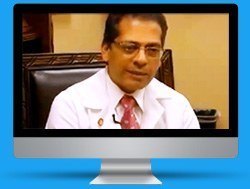Type 2 Diabetes
Diabetes is a condition characterised by very high levels of sugar (glucose) in your blood. There are two types of diabetes – type 1 and type 2 diabetes. Type 2 diabetes is a chronic disease in which your pancreas (gland present below the stomach) does not produce sufficient amounts of insulin or your body cannot utilize the insulin well. Insulin, a hormone produced by beta cells of the pancreas, is responsible for transporting glucose in your blood to the various cells of the body. The glucose is stored in the cells and converted into energy when the body requires energy to do work.
In type 2 diabetes, glucose accumulates in the blood as the cells in your body do not respond normally and become resistant to normal insulin levels. Therefore, you will require more than normal levels of insulin to keep the levels of blood glucose low. Type 2 diabetes is the most common form of diabetes that affects people over the age of 40 years, but is becoming common in children with the increase in childhood obesity.
Pre-Diabetes
More than one in three American adults over the age of 20 years currently has pre-diabetes (either elevated blood sugar levels or hemoglobin A1c levels but not within diabetes diagnostic ranges). Almost 90% of individuals with pre-diabetes are unaware that they have this condition. Over 11% of people who have pre-diabetes progress to type 2 diabetes within three years.
Did you know?
Insulin resistance syndromes are responsible for 80% of all cases of cardiovascular disease, the leading cause of death in the U.S and adults with diabetes have 2-4 times higher death rates due to heart disease and stroke.
Causes
The exact cause of type 2 diabetes is unknown. It may be hereditary or can be caused due to a sedentary lifestyle, lack of exercise, being overweight and having a poor diet. Age is another factor that can contribute to the development of type 2 diabetes.
Symptoms
The most common symptoms for type 2 diabetes are listed below. When you develop type 2 diabetes, you may not experience any symptoms for many years. Part of our initial bloodwork assessment is a highly sophisticated panel to determine the mechanisms behind the development and control of Type 2 diabetes.
- Fatigue
- Frequent urination
- Hunger and increased thirst
- Blurred vision
- Numbness or pain in feet or hands
- Slow-healing of sores
- Frequent infections
- Weight loss
- Dark patches on the skin
Diagnosis
Typical diagnosis of diabetes can be determined by the following tests:
- Fasting blood glucose test: measures blood glucose levels on an empty stomach
- Oral glucose tolerance test: determines how fast glucose is cleared from blood
- Hemoglobin A1C test: estimates average blood glucose levels across 3 months
- Urine test: detects presence of glucose in urine sample
- Most people do not have abnormal blood glucose or hemoglobin A1c (usually checked on annual physicals) until years after they have had elevated insulin levels or HOMA-IR scores. The key with correcting how our body handles and processes blood sugar is to find the issue as early as possible or to know what mechanisms are uncontrolled in current diabetics. If you have a family history of diabetes, a personal history of gestational diabetes (diabetes that develops during pregnancy and often resolves after giving birth), or have erratic control over your blood sugar an in-depth analysis of how your body processes glucose is necessary. We will look at the three primary causes of type 2 diabetes including insulin resistance, pancreatic beta-cell function, and dysglycemia.
Treatment
You may have heard the saying, "Once diabetic, always diabetic" and there is both truth and some falsehood in this common saying. Individuals who have pre-diabetes can regulate the mechanisms causing their pre-diabetes with nutrition, lifestyle, and nutrient choices and can reverse their progression to type 2 diabetes. Depending on the mechanisms behind a person’s type 2 diabetes, they may be able to fully control their diabetes within normal non-diabetic parameters and live symptom and medication free with the same approaches. Even when symptom free, their bodies may be susceptible, by previous damage to cells or the pancreas, to returning to needing medication to control their blood sugar with medications if they do not continue to pursue healthy lifestyle choices.
Dallas
3800 San Jacinto
Dallas, TX 75204
(214) 827-8777
Driving DirectionsHours:
Monday, Wednesday,
Friday: 8:00 a.m. - 11:00 a.m.
Tuesday: 4:00 p.m. - 7:00 p.m.Grapevine
823 Ira E. Woods Avenue
Grapevine, TX 76051
(214) 827-8777
Driving DirectionsHours:
Thursday: 1:30 p.m. - 5:00 p.m.






